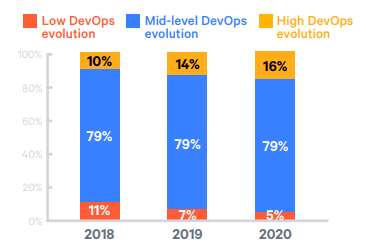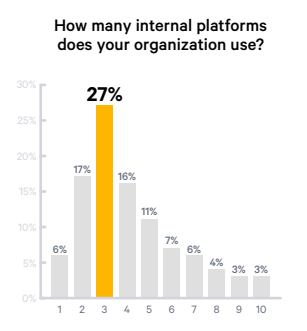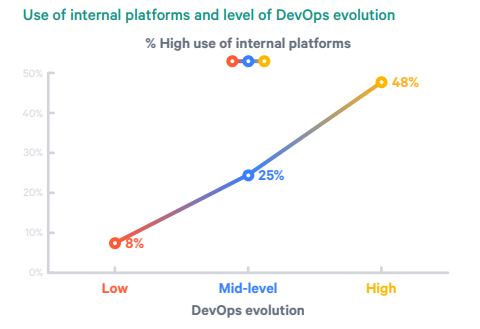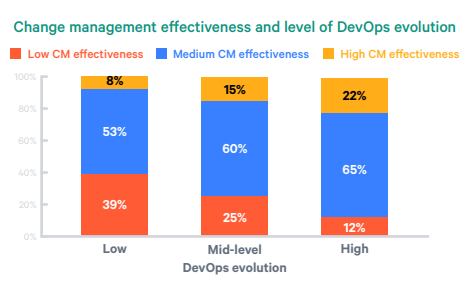| State of DevOps Report |
| Written by Janet Swift | |||
| Tuesday, 01 December 2020 | |||
|
This year's DevOps survey from Puppet focuses on two areas that can help organizations scale their DevOps initiative: a platform approach to software delivery and applying DevOps principles to change management. Puppet is the company behind the eponymous open source configuration management tool, its enterprise counterpart and other DevOps tools. Its 2020 State of DevOps Report is based on a survey with 2,400 participants around the world who work in IT, development, information security and related areas. In the introductory remarks, the report authors, Alanna Brown and Nigel Kersten from Puppet and Michael Stahnke from CircleCI write: "DevOps is fundamentally about enabling people to collaborate with each other towards a common business goal. This necessarily includes the processes and tooling that teams use, but the conversation often glosses over structural issues within an organization that inhibit good communication, the free flow of work, and continuous improvement." This is the 9th year of this survey which over its recent editions has developed a 5-stage evolution model of DevOps maturity. As the following chart shows, the majority of those surveyed are mid-level in their DevOps evolution: The finding that 16% of the firms included in the Puppet survey have attained the top level of DevOps evolution fits well with Sonatype's survey of DevSecOps developers which we reported on earlier in the year, see in which 15% of 5000 respondents described their company's DevOps as "mature". According to Puppet, higher levels of DevOps evolution mean more self‑service offerings for developers and that highly evolved firms offer a wide range of self-service capabilities, including:
For the 2020 report the Puppet team set out to investigate the relationship between level of DevOps evolution and two specific areas of structural change:
Having found that 63% of the organizations surveyed use internal platforms, 60% had between two and four platforms.
This chart presents the situations regarding the relationship between platform use and DevOps Evolution: Commenting on it, the report states: We found a strong relationship between DevOps evolution and the use of internal platforms. Highly evolved firms are almost twice as likely as mid-level organizations to report high usage of internal platforms, and are six times more likely to report high usage than low-level organizations. This finding mirrors Stage 5 of the DevOps evolution model, where self service is a key practice enabled by a foundation of standardization, automation and team autonomy. The underlying structural changes needed to reach Stage 5 reduce complexity in the technology stack, automate away a lot of toil, and reduce handoffs between teams — all while building a high degree of trust. These are all the necessary components for building an internal platform that can deliver higher value for the organization. The reports finding with regard to change management was that highly evolved firms are nearly three times as likely to have highly effective change management as firms at a low level of DevOps evolution as shown here: Explaining this, the report states: The most effective change management is achieved by firms that emphasize:
Summing up the twin issues addressed, the report has this conclusion: When organizations successfully establish a platform model for enabling application development, or significantly improve their change management effectiveness, they achieve the goal that DevOps initiatives aim at: faster and easier delivery of better quality, more secure software. A paragraph from the start of the report also caught my attention: "Perhaps a few years from now, the term “DevOps” will sound quaint — even fade away — because so many people and organizations have fully adopted the DevOps principles of collaboration, communication, small-batch iteration, feedback loops, continuous learning and improvement. We certainly hope so."
More InformationThe 2020 State of DevOps Report (pdf) Related ArticlesHappy Developers Think More About Security The State Of Secure Software Development - Three OpenSSF Courses To be informed about new articles on I Programmer, sign up for our weekly newsletter, subscribe to the RSS feed and follow us on Twitter, Facebook or Linkedin.
Comments
or email your comment to: comments@i-programmer.info
|
|||
| Last Updated ( Tuesday, 01 December 2020 ) |







